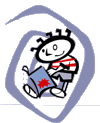 |
 |
 |
 
|
With contributions by several bee researchers and advocates, Winters (Gift Days; Jeffrey and Sloth) has written a beautiful and informative book about bees. The six chapters give an in-depth look at bee anatomy, social structure, life cycle, and pollination.
The book begins with a look at bees and their role in early civilizations. Cave paintings, hieroglyphics, and medicine prove bees were important throughout history.
The contents in chapter two will help children identify the basic body parts of bees (eyes, antennae, stingers, wings, mouthparts). A double-page spread in chapter three compares five different types of bees (carpenter, mining, leafcutter, honey, and mason bees).
After the author touches on colony collapse disorder in chapter six, she describes ten things individuals can do to keep the environment bee-friendly. Alongside short paragraphs of information, additional facts are presented in charts, graphs, and colorful (labeled) photographs and illustrations.
Activities such as a true or false bee test, a recipe using honey, directions for building a nesting site, and a questionnaire that determines if the reader would have been a suitable pre-historic honey hunter enrich the learning opportunities that come with reading this book. Back material includes a twenty-six word glossary, an extensive index, and online and book resources for further study.
A definite recommendation for a school or public library.
|







|
| |
Tanya Boudreau/2013 for curled up with a good kid's book |
|
|
For grown-up fiction, nonfiction and speculative fiction book reviews,
visit our sister site Curled Up With a Good Book (www.curledup.com)
|
|